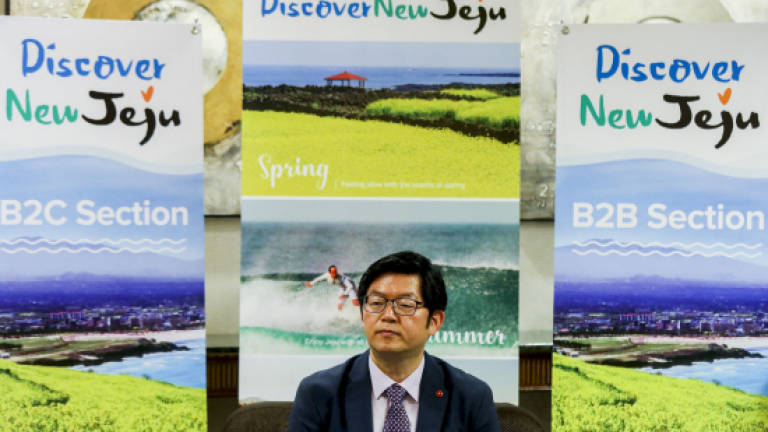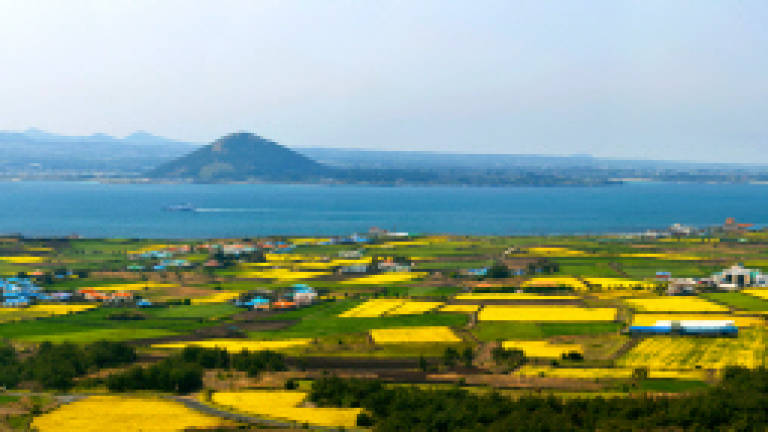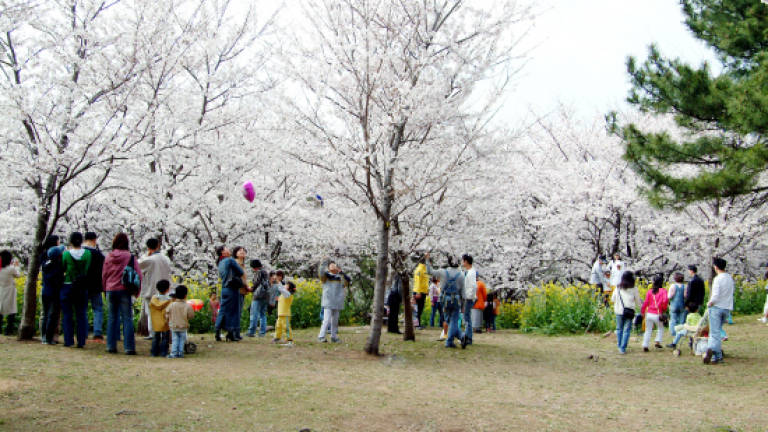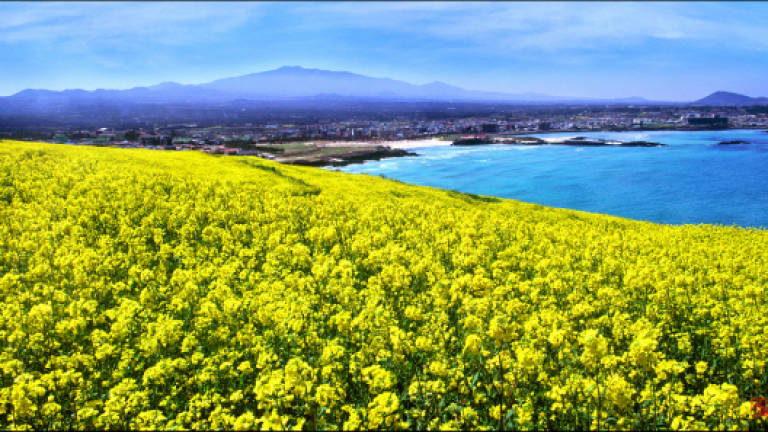Wonders of Jeju in spring




WITH AirAsia X already flying direct from Kuala Lumpur to Jeju Island four times a week, visiting this picturesque island of South Korea is so easy.
And spring is the time when flowers are in full bloom and showing all their glory.
According to Jeju Special Self-Governing Province director-general Yang Gi-Cheol, the Jeju province has four distinct seasons, and the many flower festivals in spring make it the best time to visit the largest island in Korea.
Yang was speaking at the recent Discover New Jeju Seminar 2018 in Kuala Lumpur, held as a platform for tourism exchange between Jeju and Malaysia.
Speaking through an interpreter, Yang said: “In springtime – now it’s considered springtime – there are a lot of flowers you can enjoy [such as] cherry blossoms and tulips.”
The Jeju Cherry Blossom Festival typically lasts from late March to early April, as does the equally popular Canola Flower Festival.
Visitors can also pluck the wild bracken which is in season from mid-April to mid-May.
“That will be such a wonderful experience to pluck something [like] wild vegetables in the middle of the beautiful mountain,” Yang added.
There is also the Hallasan Wild Bracken Festival, in which visitors will learn all about the vegetable and get to taste it as well.
Jeju also offers a multitude of outdoor activities perfect for the eco-conscious and adrenaline junkies.
“In spring, we have very nice weather, that’s why we do a lot of outdoor activities, including the Jeju International Tourism Marathon on May 27,” Yang added.
Visitors can also hike up Mount Hallasan, the highest mountain in the country. There are six trails ranging in difficulty levels, which lead all the way to the top.
Yang added that the Jeju Special Self Governing Provincial Government hopes to educate locals and tourists alike about the island’s history.
He pointed out a small camelia flower pin he wore on his suit, saying it was to commemorate the 70th anniversary of the island’s April 3, 1948 uprising, and the massacre that took place there.
This tragic moment in the island’s history is commemorated with the Jeju April 3 Peace Park, part of what Yang calls ‘dark tourism’, akin to the Auschwitz Memorial and Museum in Poland, or The Killing Fields Museum of Cambodia.
“So, when you hear of dark tourism, don’t get confused. That is something [with] historical background,” he added.
Also present at the event were representatives from popular tourist destinations on the island.
One of these attractions, which is available year-round, is Play K Pop, located in Jeju’s Seogwipo city, which lets visitors satisfy their K-pop idol fantasies.
The one-of-a-kind digital museum pushes technological boundaries with its hologram concert, Live Holo, featuring top stars throughout K-pop history like BigBang, 2NE1, and CLON.
Serving up hyper-realistic 3D virtual concerts – minus the 3D-glasses – you’ll instantly feel transported to an actual live show, and even get a chance to dance with G-Dragon or Sandara Park.
While in the city, make sure to head over to another unique museum that will guarantee to appeal not only to children, but to adults with an inner child unable to shed their love for stuffed animals.
The Teddy Bear Museum is the perfect place for families to walk through displays of cute plush bears dressed up in various costumes, while also learning about its history.
For more, visit the Jeju Tourism Organisation website or Facebook page.
Shahrill Basri/thesun
Caption: Yang at the Discover New Jeju Seminar 2018 in Kuala Lumpur; visitors to Jeju island can look forward to its cherry blossom festival; and canola flower festival.